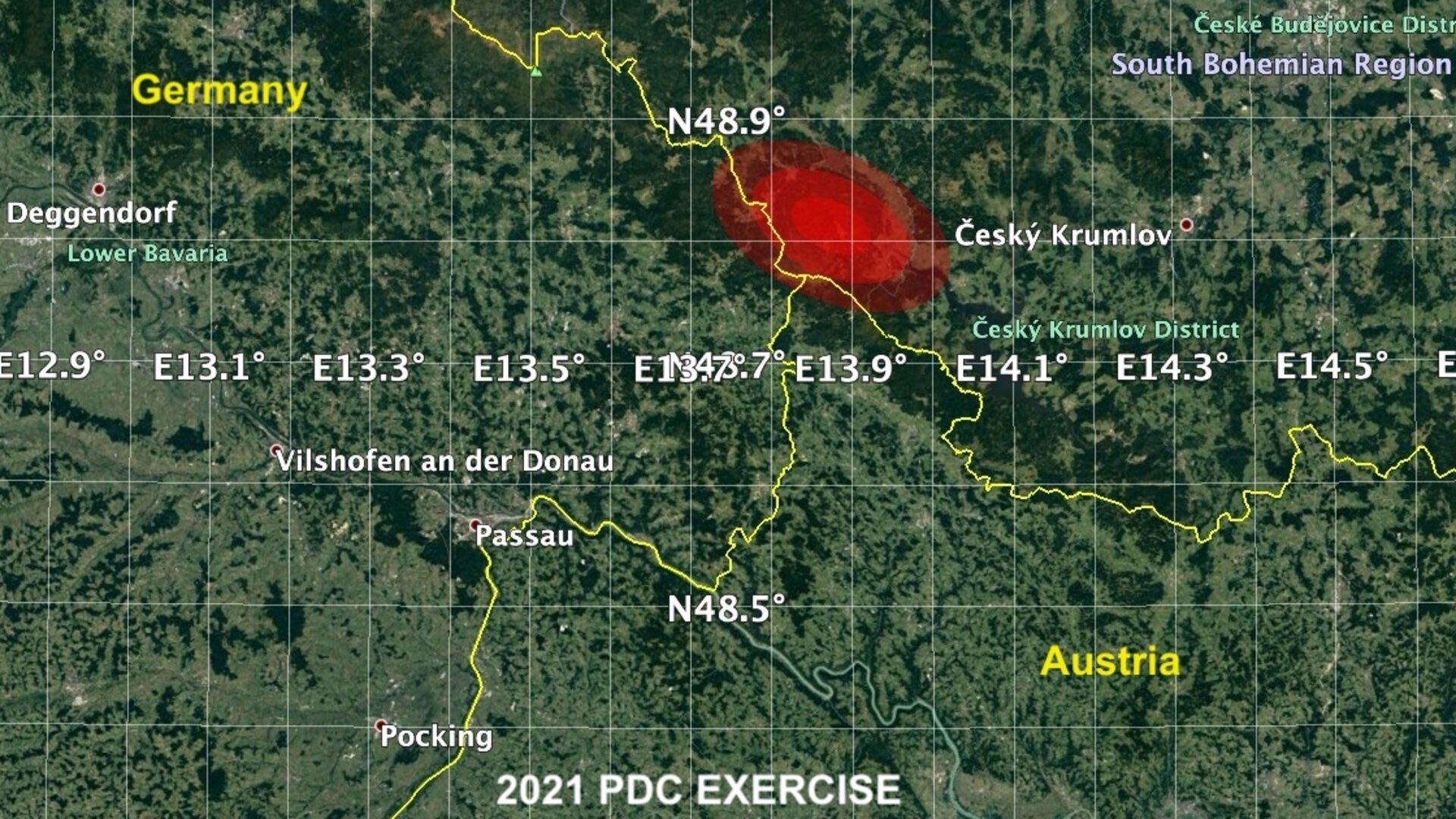Via SciTech, May 1:
The shaded regions in this image show where the (fictional) impact is most likely to occur. There is a 99% chance the impact will be located within the outer contour, 87% inside the middle contour, and 40% inside the central dark red region. For educational purposes only. Not real. Credit: ESA
In an alternate reality playing out at this year’s international Planetary Defense Conference, a fictional asteroid crashes over Europe, ‘destroying’ a region about 100 km wide near the Czech Republic and German border. The scenario was imagined, but the people who took part are very real, and the lessons learned will shape our ability to respond to dangerous asteroids for years to come.
Asteroid impact: the only natural disaster we might prevent
Natural hazards come in a range of forms and occur with varying frequency. Some are relatively frequent events with localized impacts such as flooding and wildfires. Others occur just once in a blue moon but can impact the entire planet, such as global pandemics and asteroid impacts.
The threat from asteroids however is unique: an asteroid impact is the most predictable natural disaster we face, and given enough warning we have the technology, in principle, to entirely prevent iIn the last few decades, the field of planetary defense has made remarkable progress – humankind now has telescopes dotted across the planet seeking out hazardous space rocks, the largest of which have all been discovered, and this year we launch a mission that will for the first time put asteroid deflection to the test.
The good news is, when it comes to giant, dinosaur-extinction-sized asteroids, we are pretty sure we’ve found every one out there. Because of their sheer size, they are easy to detect. But the smaller they get, the more we still have to find, which is why the impact of this year’s asteroid, 2021 PDC, provided such an important lesson: we can only prevent what we can predict.
This year’s scenario: mission impossible
Although this scenario is realistic in many ways, it is completely fictional and
does NOT describe an actual asteroid impact.
It all began on April 19, 2021, when a new asteroid was discovered by the Pan-STARRS near-Earth object survey project. It soon became clear that this asteroid was worryingly likely to strike Earth in just six months.
Further observations confirmed what the international community had feared, an impact was certain. However, the size of the object remained unclear, ranging anywhere from 35 to 700 meters in diameter.
As would be the case if a real asteroid were on collision course, the International Asteroid Warning Network (IAWN) – a network of organizations that detect, track and characterise potentially hazardous asteroids – publicly disseminated weekly updates on the impact probability as the situation progressed....
....MUCH MORE
See also: "Planetary Defense Conference Exercise - 2021"I have not been invited to any of the Planetary Defense Conferences. Maybe in 2023.
And fortunately, this year's exercise had the 'roid land roughly in the center of the Munich-Prague-Vienna triangle so most of the major beer production was spared.
